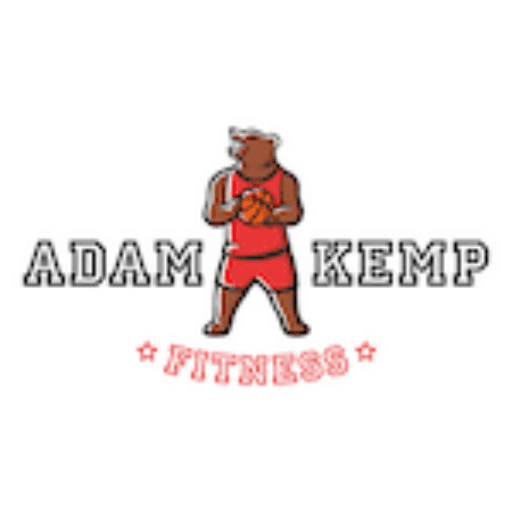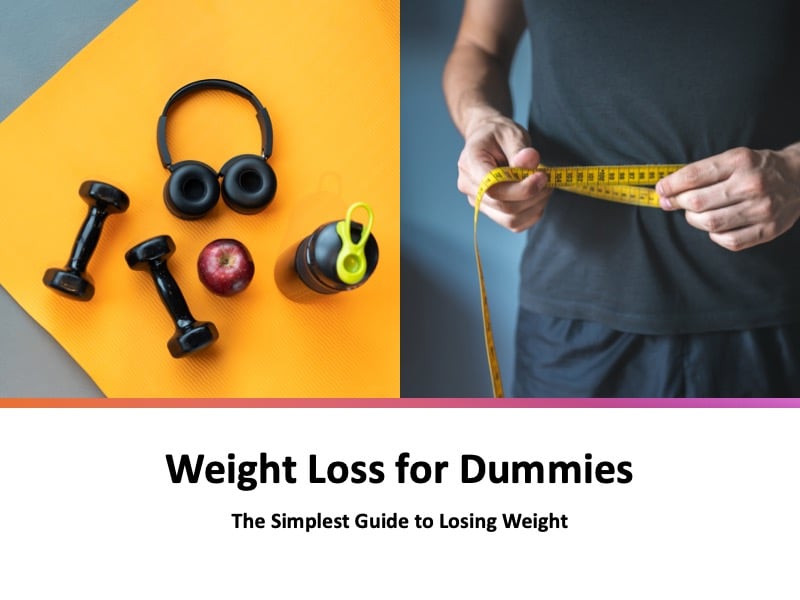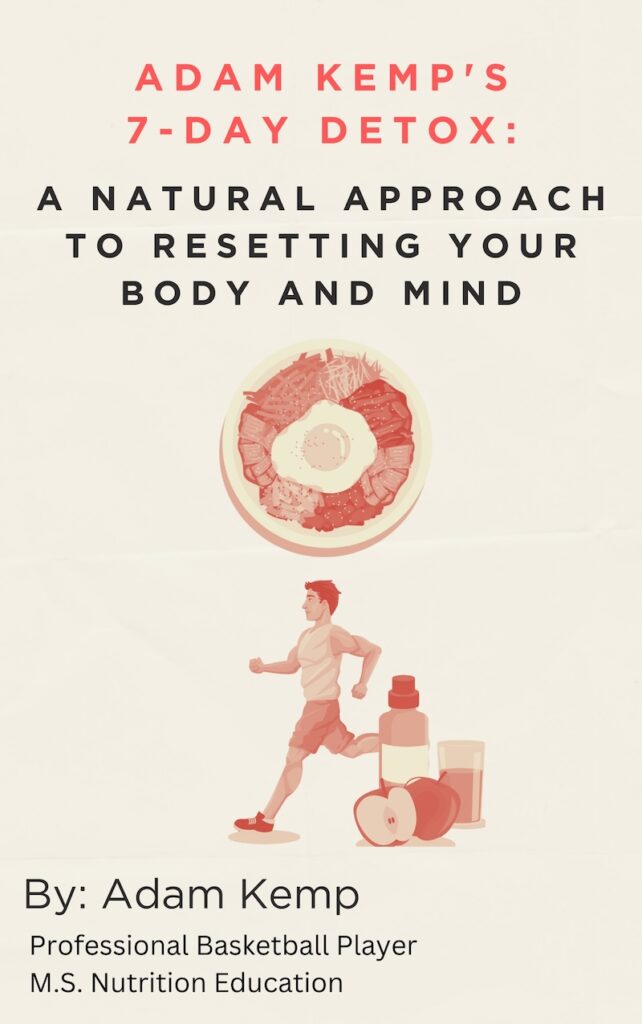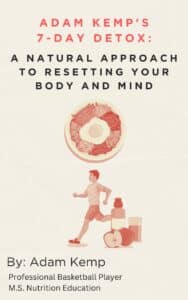Weight Loss for Dummies: The Simplest Guide to Losing Weight
When it comes to achieving lasting fat loss, there’s a reason I believe in a “weight loss for dummies” approach, as it cuts through the noise and focuses on what actually works.
After years of playing professional basketball and earning a Master’s Degree in Nutrition Education, I’ve seen firsthand how overcomplicating weight loss leads to frustration and failure.
Real, sustainable change doesn’t come from extreme diets or endless cardio, it comes from understanding how your body works, fueling it properly, moving consistently, and creating habits that support long-term health.
In this guide, I’ll walk you through clear, science-backed steps for improving your body composition, increasing energy, and building a plan you can actually enjoy and maintain.
You don’t need to be perfect to see progress, you just need the right strategy, the right mindset, and the willingness to start.
If you’re ready for a straightforward, effective plan that makes sense of the process, this is your true “weight loss for dummies” guide.
Weight Loss Kit For Dummies Review: A Good Place to Start
The Weight Loss Kit For Dummies is part of the long-running, highly popular “For Dummies” series, which is well-known for making complex topics easy to understand and apply.
Like the rest of the series, this book delivers foundational knowledge in a friendly, non-intimidating format, perfect for readers who are just beginning their health journey.
Written by Carol Ann Rinzler, a health writer with decades of experience, this guide offers a no-nonsense, fad-free approach to weight loss grounded in real nutrition science and behavior change.
What makes this book valuable, even over 20 years after its release, is its emphasis on long-term lifestyle change rather than gimmicks. It helps readers:
- Set realistic weight loss goals
- Understand how and why fat is stored
- Create weekly meal plans using real food
- Debunk diet fads, pills, and “miracle” weight loss claims
- Design a basic fitness routine to support fat loss
- Stay motivated with charts, checklists, and behavior strategies
For beginners or those overwhelmed by conflicting diet advice, Weight Loss Kit For Dummies provides clarity. It doesn’t try to oversimplify science, but it avoids jargon and extreme tactics.
The tone is supportive and informative, and the focus on consistency over perfection still holds true today.
Last update on 2025-12-11 / This article includes affiliate links/Images via Amazon Product Advertising API. I may earn commissions on purchases made through these links.
Best Weight Loss Kit for Dummies Alternative
If you’re looking for a basic, common-sense introduction to weight loss that avoids hype, thhe book Weight Loss Kit for Dummies” is a solid place to start..
That said, nutrition science has evolved a lot since 2001.
While this book remains a good starting point, I highly recommend supplementing it with more current and specialized nutrition books, especially those written by practicing physicians and researchers.
Here are a few of the nutrition education books that have had a major impact on how I personally view food, fitness, and long-term health:
Sugarproof
Sugarproof is an essential guide for parents and health-conscious individuals who want to understand how hidden sugars in everyday foods are fueling the obesity and chronic disease epidemic, especially among children.
Dr. Michael Goran and Dr. Emily Ventura break down the science behind how sugar affects the developing brain, gut, and metabolism, using compelling evidence and real-world case studies.
I appreciated this book’s family-focused approach, offering actionable strategies like sugar swaps, detox plans, and grocery store guidance that make reducing sugar intake practical and sustainable.
It’s an excellent book for any parent who wants to create a healthier home food environment without being restrictive or extreme.
Last update on 2025-12-11 / This article includes affiliate links/Images via Amazon Product Advertising API. I may earn commissions on purchases made through these links.
Fiber Fueled
Fiber Fueled fundamentally changed how I view gut health and its connection to everything from immune strength to mental clarity.
Dr. Will Bulsiewicz, a board-certified gastroenterologist, presents the latest (of the time) microbiome research in an engaging and digestible format, making complex science approachable and practical.
The book offers not just explanations but also protocols and plant-focused meal plans that help you increase fiber intake without sacrificing taste or convenience.
His emphasis on diversity in plant foods and gradual transitions makes this a powerful, sustainable blueprint for healing your gut and optimizing your long-term health.
Last update on 2025-12-11 / This article includes affiliate links/Images via Amazon Product Advertising API. I may earn commissions on purchases made through these links.
Food Fix
Food Fix goes beyond personal nutrition to explore the ripple effects of our food system on public health, climate change, and social inequality.
Dr. Mark Hyman connects the dots between industrial agriculture, processed food, chronic disease, and the rising burden on global healthcare systems.
What I enjoyed about this book is how it blends research with practical solutions. It helps individuals make better choices while advocating for broader systemic reform, improved health outcomes, and reduced spending on healthcare in the United States and the world.
As the book explains, it’s not just about what’s on your plate, it’s about how your food choices can help fix a broken system and shape a healthier future.
Last update on 2025-12-11 / This article includes affiliate links/Images via Amazon Product Advertising API. I may earn commissions on purchases made through these links.
This Is Your Brain on Food
Written by a Harvard-trained psychiatrist and nutrition specialist, This Is Your Brain on Food is the most comprehensive exploration of how diet directly impacts mental health that I’ve read.
Dr. Uma Naidoo explains the relationship between nutrients, brain function, and emotional well-being, covering everything from depression and anxiety to ADHD and Alzheimer’s.
She also provides practical dietary recommendations and recipes that support cognitive performance and mood stability.
It’s an outstanding resource for anyone who wants to improve their mental clarity, emotional balance, or prevent cognitive decline through nutrition.
Last update on 2025-12-11 / This article includes affiliate links/Images via Amazon Product Advertising API. I may earn commissions on purchases made through these links.
The Salt Fix
The Salt Fix is one of my favorite reads as it challenges conventional dietary wisdom with a bold but science-backed argument: salt is not the villain it’s been made out to be.
Dr. James DiNicolantonio, a cardiovascular research scientist, analyzes historical data and modern clinical studies to reveal how low-sodium guidelines may actually be harming more people than they help.
He makes a strong case for the essential role salt plays in hydration, adrenal health, and physical performance, especially for athletes or those on low-carb diets.
If you’ve ever felt fatigued, craved salt, or struggled with electrolyte balance, this book can offer a unique shift in perspective.
Last update on 2025-12-11 / This article includes affiliate links/Images via Amazon Product Advertising API. I may earn commissions on purchases made through these links.
How to Lose Weight for Dummies
Losing weight isn’t just about calories or cardio.
It’s about understanding how your body works, how it burns fat, and how you can create lasting change.
This guide focuses on building a strong foundation in metabolism, nutrition, and behavior change, using common sense, not gimmicks.
The goal isn’t just to lose weight, it’s to lose fat, preserve muscle, and transform your health from the inside out.
Step 1: Set a SMART Weight Loss Goal
Before jumping into a workout program or changing your diet, clearly define what you want to achieve and why it matters.
The SMART goal framework (Specific, Measurable, Achievable, Relevant, Time-Bound) helps make your goals more actionable and motivating (Doran, 1981).
- Specific: Instead of “lose weight,” define your exact goal, such as, e.g., “Lose 15 pounds of body fat while preserving muscle.”
- Measurable: Use a smart scale, tape measurements, progress photos, or fitness benchmarks like step count or strength progress to gauge your results.
- Achievable: A pace of 1–2 pounds per week is both realistic and healthy; crash dieting increases the risk of muscle loss and rebound weight gain.
- Relevant: Link your goal to something personal and emotionally significant, such as “I want to feel confident at my son’s graduation in three months.”
- Time-Bound: Give yourself a clear deadline, like “I will lose 15 pounds in 12 weeks by walking daily and eating a high-protein diet.”
Breaking larger goals into smaller milestones (like losing 5 pounds in the first month or increasing protein intake by 10% per day) builds momentum and helps maintain motivation over time.
Step 2: Understand the Energy Balance Equation
At its core, weight loss depends on creating a calorie deficit – burning more energy than you consume.
However, sustainable fat loss requires more than just cutting calories; you need to fuel your body intelligently to preserve muscle and stay energized.
- Calories In: This includes all food and beverages you consume, with alcohol and liquid calories often overlooked despite their impact.
- Calories Out: This includes your basal metabolic rate (BMR), non-exercise activity thermogenesis (NEAT), exercise, and the thermic effect of food (TEF), which is the energy your body uses to digest what you eat.
Not All Calories Are Equal
- Protein has the highest thermic effect (up to 30%), helping preserve muscle and supporting satiety and metabolism.
- Fiber slows digestion, stabilizes blood sugar, and feeds beneficial gut bacteria, which is critical for long-term fat loss.
- Sugar and refined carbs spike insulin, increase hunger, and can lead to fat storage.
- Healthy dietary fats help regulate hormones like leptin, which controls fullness and body weight regulation.
Focusing on nutrient-dense whole foods helps regulate hunger, improves energy levels, and makes fat loss feel less restrictive.
Step 3: Build a Diet You Can Stick With
Your diet should be simple, enjoyable, and rooted in real food. A sustainable eating plan isn’t about perfection, it’s about consistency and nutrient quality.
For a deeper look at nutrition, check out my article on how to eat a healthy, well-balanced diet.
Protein
Protein is your metabolic powerhouse for losing weight.
Aim for 1.2–2.0 grams per kilogram of body weight daily to maintain lean muscle, promote fat burning, support recovery, and increase muscle growth (Phillips et al., 2016).
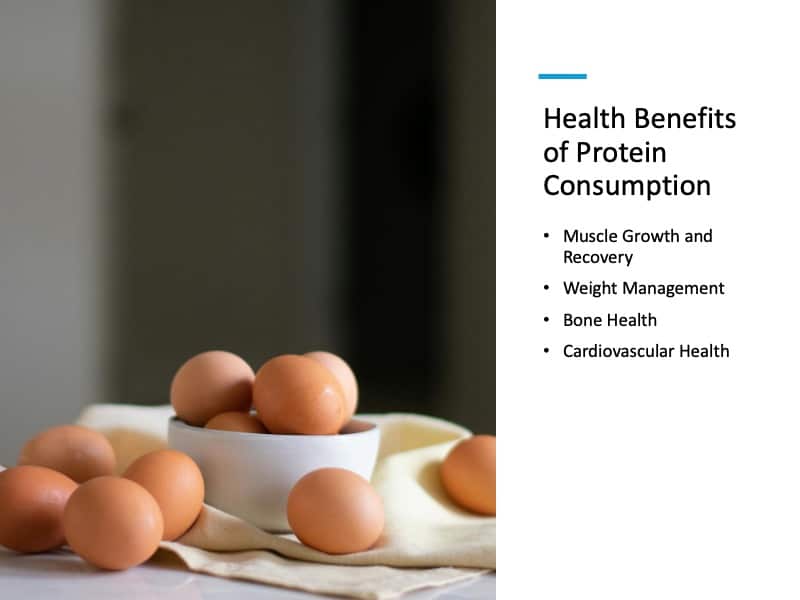
Prioritize whole food sources like eggs, lean meats, fish, Greek yogurt, and legumes.
Whey and plant-based protein shakes are great for convenience, especially post-workout or while on the go.
Carbohydrates
Don’t fear carbs, they’re essential for fueling workouts, supporting thyroid function, and many other aspects of health.
Choose slow-digesting complex carbohydrates like oats, sweet potatoes, berries, and quinoa.
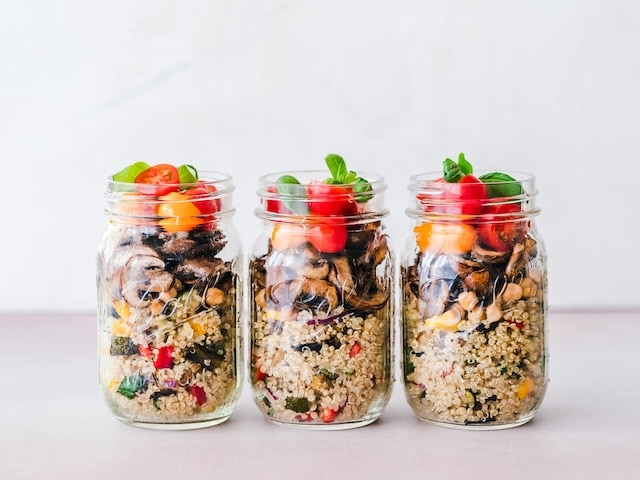
These promote fullness, stabilize blood sugar, and support your ability to train hard and recover properly.
Fiber
Fiber is your secret weapon for gut health and weight loss..
Aim for 25–30g per day from whole plant foods.
Prebiotic fiber improves digestion, supports appetite regulation, and feeds beneficial gut bacteria, which play a role in weight control, immunity, and mental health.
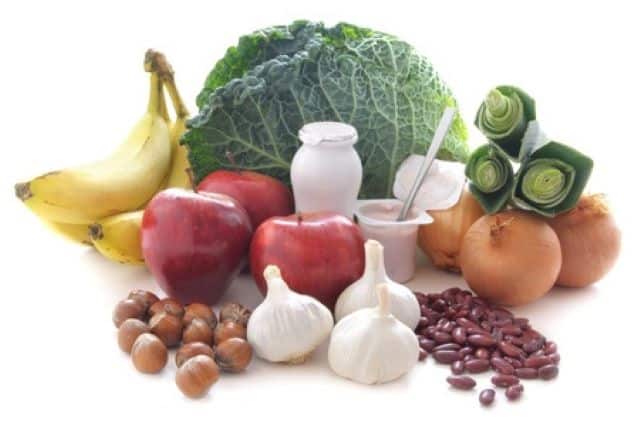
Diverse fiber intake supports microbiome diversity, a key marker of long-term wellness.
Fats
Dietary fats are essential for brain health, hormone function and much more.
Focus on omega-3-rich sources like fatty fish, walnuts, flaxseeds, and avocado.
These fats support mood, cognitive performance, and healthy inflammation levels.
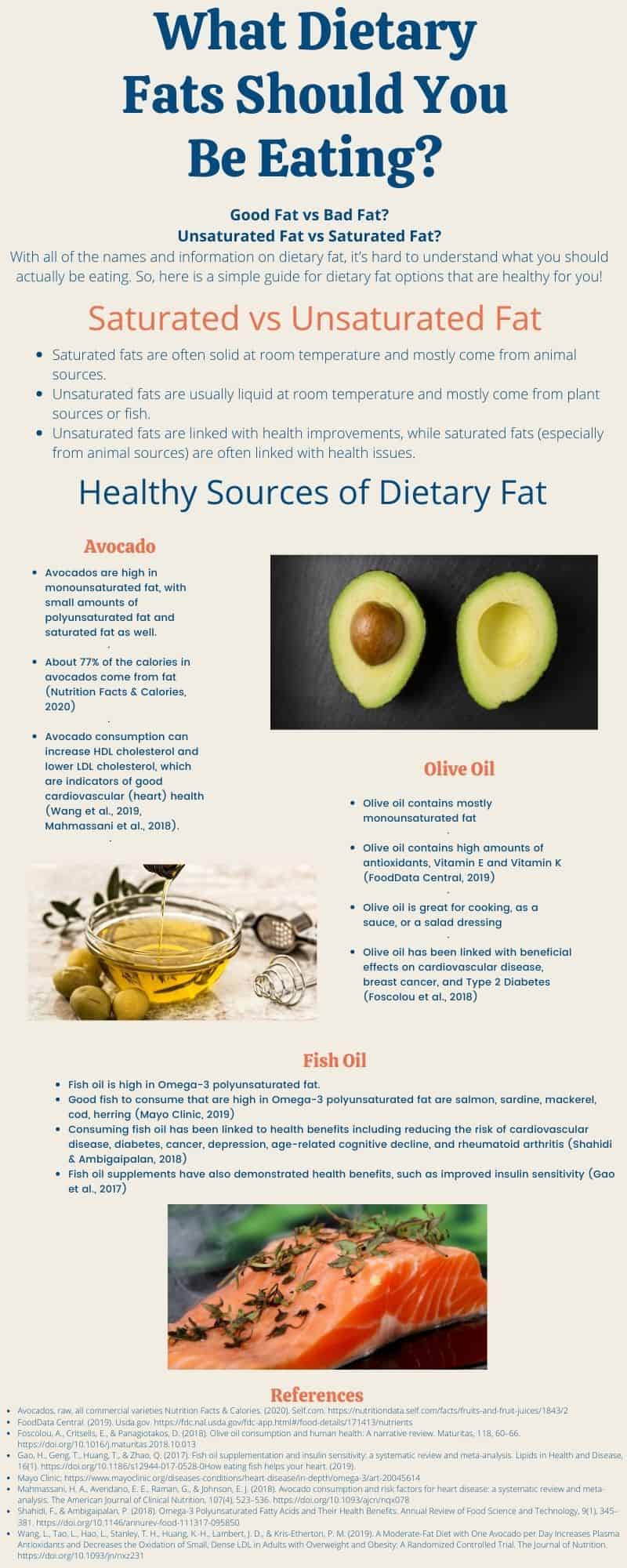
Hydration
Hydration supports weight loss in several key ways by improving metabolic function, supporting digestion, and regulating hunger signals.
Even mild dehydration can trigger sensations that mimic hunger, leading to unnecessary snacking and increased calorie intake.
Drinking a full glass of water 20–30 minutes before meals can increase satiety and reduce overall food consumption.
Staying well-hydrated also helps the body metabolize stored fat more efficiently and supports kidney and liver function, which are crucial for detoxification and fat metabolism.
Aim to sip water consistently throughout the day, not just when you feel thirsty, and increase intake during exercise or hot weather.
Green tea, herbal teas, and black coffee (unsweetened) offer hydration with added metabolic benefits, while sugar-sweetened beverages, alcohol, and excessive fruit juices add calories and can disrupt fat loss efforts.
For most people, 2.5–3.5 liters of fluid per day is a realistic goal, with adjustments based on activity and climate.
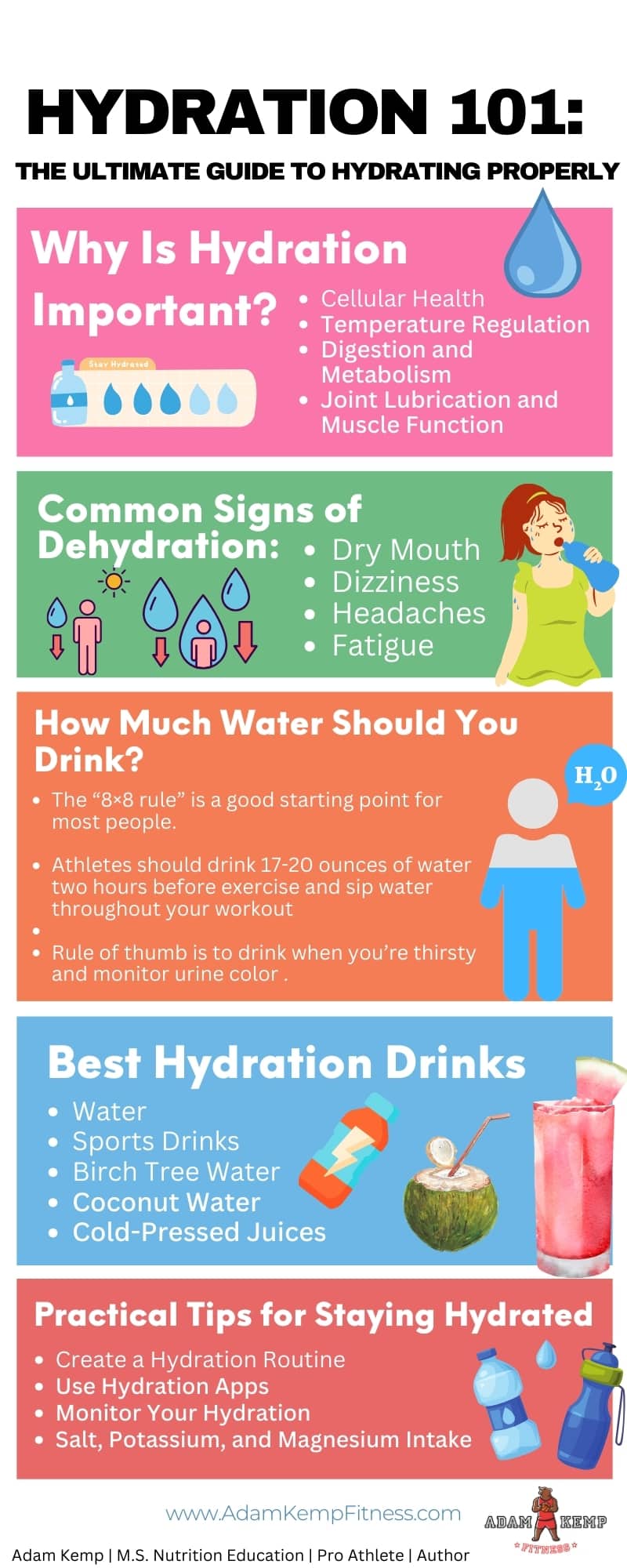
Step 4: Start Moving, Even If You’re a Beginner
Movement doesn’t need to be extreme to be effective.
The goal is to increase calorie burn, improve circulation, and stimulate fat loss while building strength and endurance over time.
Resistance Training
Resistance training (aka strength training) builds lean muscle, which boosts your resting metabolic rate and helps you look leaner, not just lighter.
Start with bodyweight exercises like push-ups, air squats, and resistance bands 2–3 times per week.
Progress gradually by increasing reps, sets, or resistance to keep muscles challenged.
Cardio
Incorporating both low-intensity steady-state (LISS) cardio and high-intensity interval training (HIIT) into your weekly routine can maximize fat loss and support cardiovascular health.
LISS, such as brisk walking, cycling, or light jogging, primarily uses aerobic pathways, relying on oxygen to fuel longer-duration, lower-intensity efforts.
It’s easy to recover from and can be done frequently without overtaxing your nervous system or joints.
HIIT, on the other hand, consists of short bursts of maximal effort (like sprint workouts or jump squats) followed by rest or active recovery, and primarily taps into anaerobic systems, which use stored energy for explosive, short-duration work.
HIIT not only burns a significant number of calories in a short time, but it also stimulates excess post-exercise oxygen consumption (EPOC), often referred to as the “afterburn effect,” which increases calorie burn for hours after your workout ends.
Combining both aerobic (LISS) and anaerobic (HIIT) forms of cardio provides a well-rounded metabolic stimulus, supports endurance and fat burning, and helps prevent plateaus.
For most people, 2–3 sessions per week offer a great balance between efficiency, recovery, and fat loss results.
NEAT
Non-exercise activity thermogenesis (NEAT) is your secret weapon.
NEAT includes all your movement outside structured exercise or workouts, including walking, standing, house cleaning, and even fidgeting.
Parking farther from entrances, pacing during phone calls, and taking the stairs can add up to hundreds of extra calories burned daily.
NEAT also plays a considerable role in preventing plateaus.
Step 5: Fix Your Lifestyle to Keep the Weight Off
You can’t out-train or out-diet poor sleep, chronic stress, or toxic habits.
Lifestyle habits influence your hormones, willpower, recovery, and mental clarity, making or breaking your weight loss journey.
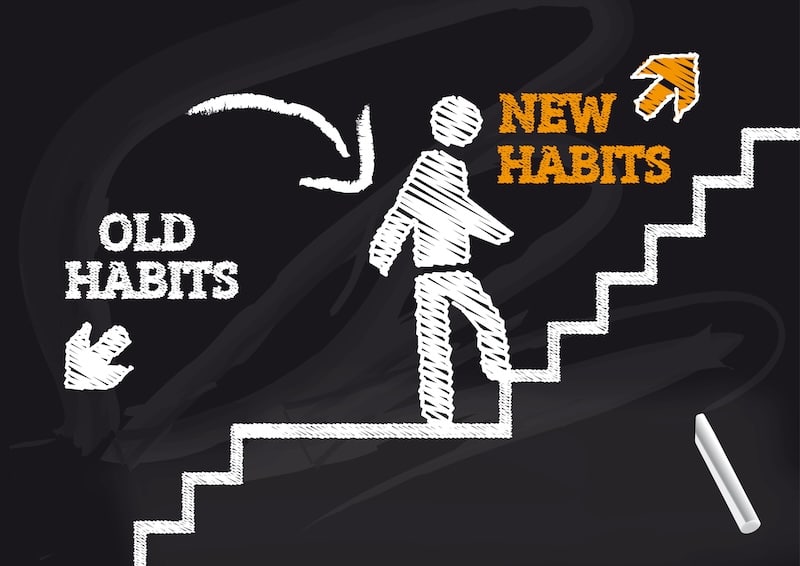
Creating healthy habits will make long-term weight loss and weight management both simpler and attainable.
Sleep 7–9 Hours
Sleep is when your body repairs muscle, balances hormones, and regulates appetite.
Poor sleep increases ghrelin (the hunger hormone) and reduces leptin (the satiety hormone), leading to more cravings and poor dietary choices.
Aim for consistent sleep/wake times and minimize screens before bed.
For more information, check out my article on how to sleep better at night.

Manage Stress
Chronic stress elevates cortisol, which promotes abdominal fat storage and increases sugar cravings.
Use daily habits like walking outside, journaling, prayer, or breathwork to keep stress in check.
High stress also disrupts sleep and leads to emotional eating, so managing it pays off.
Understanding the psychology of eating habits and their relationship with chronic stress is important for losing weight and keeping it off.
Reduce or Eliminate Alcohol and Smoking
Alcohol and weight loss do not go together.
Alcohol is metabolized as a priority energy source, slowing fat metabolism and impairing sleep.
It also lowers inhibition, making poor food choices more likely.
Smoking impairs cardiovascular capacity and recovery, making exercise less effective and sustainable.
Do what you can to quit smoking.
Step 6: Use Supplements Wisely (Optional, Not Essential)
Supplements should fill small gaps, not serve as the foundation of your weight loss plan.
Focus on food first, but consider these supportive additions:
Helpful Supplements
A few of the best supplements for weight loss include:
- Protein Powder: A convenient way to meet daily protein targets, especially post-workout.
- Green Tea Extract: Contains EGCG, which boosts fat oxidation and metabolism.
- L-Carnitine: May improve fat metabolism by helping shuttle fatty acids into cells.
- Caffeine: Increases alertness and performance; also shown to enhance fat burning during exercise.
- Prebiotic Fiber Supplements: Useful if you struggle to hit 25–30g/day through whole food sources alone.
Supplements to Avoid
- “Fat burners” with questionable ingredients or excessive stimulants
- Detox teas and appetite suppressants with little evidence and potential side effects
Stick with well-researched, third-party tested products from reputable companies.
Step 7: Track Your Progress Without Obsessing
Monitoring progress helps keep motivation high, but avoid becoming scale-obsessed. Use multiple metrics to capture the full picture of your transformation.
- Weigh in once per week under consistent conditions (same time, same clothing, same scale). A smart body analyzer like the BodyPedia Smart Scale can help with additional insights.
- Track inches around your waist, hips, chest, and thighs monthly
- Take progress photos in consistent lighting and clothing to visually monitor changes
- Celebrate non-scale victories like better sleep, clearer skin, fewer cravings, and improved workouts
The scale might fluctuate due to water weight, hormones, or digestion, but consistency with healthy weight loss habits always leads to results.
Final Thoughts: Why This “Weight Loss for Dummies” Method Works

I believe this method works because it’s grounded in science but designed to be practical and approachable for real life.
Over the years, I’ve learned that sustainable fat loss isn’t about shortcuts; it’s about applying proven principles like maintaining a calorie deficit, improving food quality, and building habits that you can stick to day after day.
I focus on strategies that support body composition, metabolism, and hormonal balance, such as eating more fiber and protein, staying hydrated, and combining strength and cardio training.
From my own experience, adding aerobic and anaerobic exercise helps not just with burning calories, but also with improving performance, energy levels, and long-term metabolic health.
Additionally, if you want to lose weight and keep it off, lifestyle factors like quality sleep and stress management aren’t optional; they’re essential pieces of the puzzle.
This approach doesn’t rely on restriction or perfection; it’s about making consistent, wise choices and understanding how each one supports your body.
When you understand the “why” behind what you’re doing, it becomes much easier to stay committed and create lasting change.
This website does not provide medical advice. This website site does contain affiliate links, and purchases may earn a commission.
Read my Medical Disclaimer, Review Disclaimer, and Publishing Policies for more details. Use of this site indicates acceptance of these terms.
